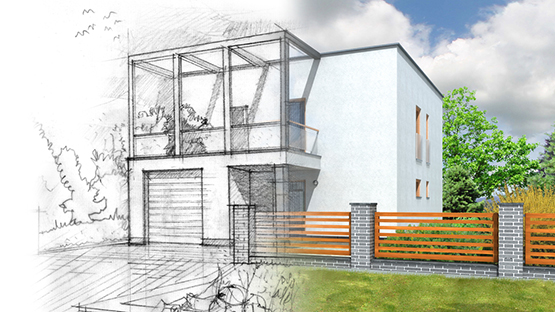Top Reasons to Pick CDA Architects for Your Residential or Commercial Styles
Top Reasons to Pick CDA Architects for Your Residential or Commercial Styles
Blog Article
Comprehending the Collaborative Refine In Between Designers and Designers in Modern Construction Projects
The collective process between engineers and engineers is essential in modern building jobs, as it integrates design intent with engineering expediency. Checking out these dynamics reveals insights that can dramatically impact project outcomes and total industry criteria.
The Significance of Partnership
The collective harmony between designers and designers is vital for the successful realization of any kind of building job. This collaboration brings with each other distinctive experience and perspectives, allowing the combination of ingenious style with practical engineering remedies. By functioning with each other, architects and designers can make sure that a project not only satisfies visual and practical requirements however also abides by safety, sustainability, and monetary constraints.
Collaboration promotes a shared vision, facilitating the positioning of goals and expectations from the beginning. This alignment is critical in dealing with potential challenges and mitigating risks that could occur throughout the task lifecycle. Moreover, a collaborative strategy enables the reliable appropriation of sources, optimizing both time and price.
The importance of cooperation prolongs to the iterative procedure of layout and building, where feedback from engineers can educate building choices, causing more feasible and sustainable styles. On the other hand, architects can inspire engineers to believe creatively about exactly how to attain structural honesty without endangering artistic intent. Ultimately, the collective partnership between engineers and designers is not just helpful; it is fundamental to the production of high-quality, functional, and cutting-edge constructed settings that meet the demands of society.
Communication Techniques and Devices
Reliable communication techniques and devices are essential for cultivating collaboration in between designers and designers throughout the task lifecycle. Establishing clear networks of interaction is necessary to make certain that all staff member are aligned with task purposes, timelines, and duties. Regular conferences, both in-person and digital, provide possibilities for stakeholders to talk about progress, address problems, and make notified choices.

In addition, embracing collaborative communication tools, such as Slack or Microsoft Teams, permits for immediate messaging, file sharing, and ongoing discussions, advertising a more nimble reaction to emerging issues. Document administration systems additionally play a vital function in arranging project documentation, guaranteeing that all staff member have accessibility to the newest information.
Shared Objectives and Task Vision
A combined job vision works as the structure for effective collaboration between designers and engineers (cda architects). This common vision not only lines up the initiatives of both events however likewise establishes a common structure for decision-making throughout the project's lifecycle. By articulating clear goals, stakeholders can successfully browse the complexities of contemporary building projects, making sure that both aesthetic and practical needs are fulfilled
Developing shared goals includes open dialogue and a comprehensive understanding of each self-control's contributions. Designers generally concentrate on design intent, spatial connections, and individual click to read experience, while engineers emphasize structural honesty, systems capability, and compliance with laws. When these perspectives are lined up, the result is a cohesive project that sticks to both imaginative ambitions and technological usefulness.
Additionally, a distinct task vision promotes responsibility amongst employee, urging each participant to take ownership of their role in accomplishing the desired outcome. Regular check-ins and joint workshops can better enhance this commitment, enabling modifications to be made as the project progresses. Ultimately, a common vision not just improves synergy yet additionally elevates the quality of the final deliverable, leading to successful project completion.
The Function of Modern Technology
Leveraging modern technology has ended up being vital in enhancing cooperation between architects and engineers. Building Information Modeling (BIM) stands out as a crucial technology, allowing both designers and engineers to produce comprehensive 3D designs that encapsulate layout intent and architectural stability.
Additionally, cloud-based platforms make it possible for smooth cooperation, permitting task stakeholders to access and upgrade job information from anywhere. This fosters a culture of transparency and responsibility, as changes can be tracked and reviewed in real-time. Additionally, mobile applications more enhance communication, giving on-site teams with prompt access to job specs and updates.
Arising innovations such as expert system and equipment knowing are likewise beginning to play a role in anticipating analysis, aiding groups identify potential problems prior to they emerge. Ultimately, the duty of technology in architecture-engineering collaboration not only enhances operations efficiencies yet likewise improves advancement, bring about even more successful job results. By embracing these technical advancements, engineers and article engineers can ensure a much more natural and productive collective process throughout the building lifecycle.
Study in Effective Partnerships
Many case researches show the extensive impact of efficient collaborations between engineers and designers on project end results. One remarkable example is the partnership on the High Line in New York City City, where landscape engineers, designers, and city coordinators interacted to transform a deserted rail line right into a lively public park. This multidisciplinary approach not only boosted the aesthetic top quality yet additionally guaranteed structural safety and security and ecological sustainability.
:max_bytes(150000):strip_icc()/Buildingdesigns-GettyImages-912482942-db55b3af711044a3a42ad1040c6711a9.jpg)
The Burj Khalifa in Dubai further demonstrates the value of collective initiatives - cda architects. The assimilation of design and engineering experience allowed the task team to accomplish extraordinary heights while adhering to security laws and visual vision
These examples highlight the importance of interaction, trust, and shared goals. In today's intricate construction environment, such collaborations are crucial to navigating obstacles and delivering projects that satisfy both useful and visionary objectives.
Verdict
In verdict, the partnership in between designers and engineers is essential for the success of modern-day building and construction jobs. Efficient communication methods, a shared job vision, and the combination of sophisticated innovations are essential parts that facilitate this partnership. By promoting a society of responsibility and leveraging devices such as Building Details Modeling (BIM), groups can navigate project complexities, ensuring that visual, useful, and sustainability purposes are achieved. Eventually, this synergy leads to innovative and effective task end results.
Report this page